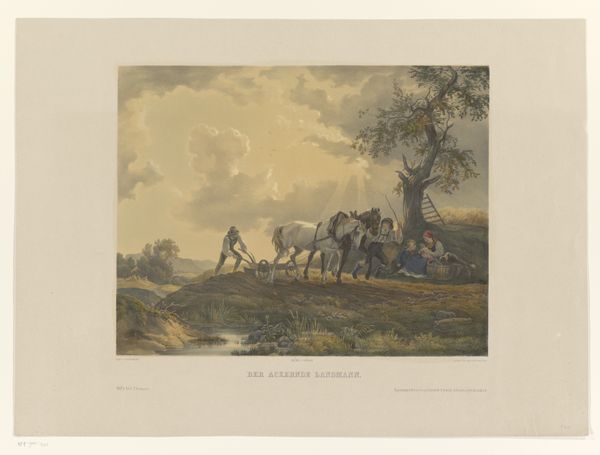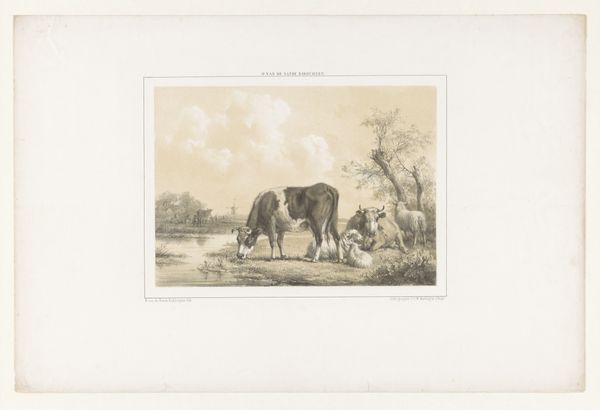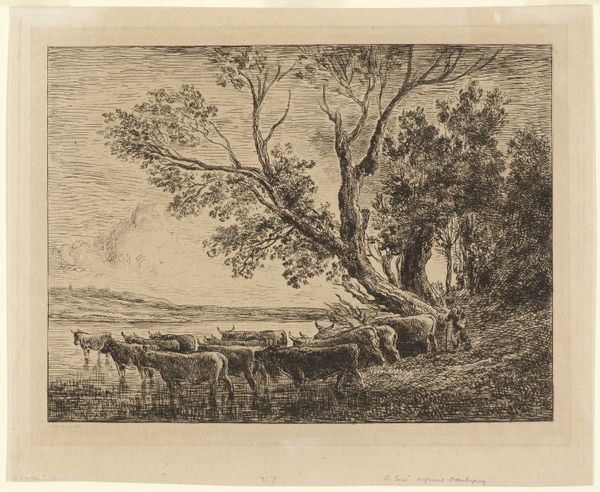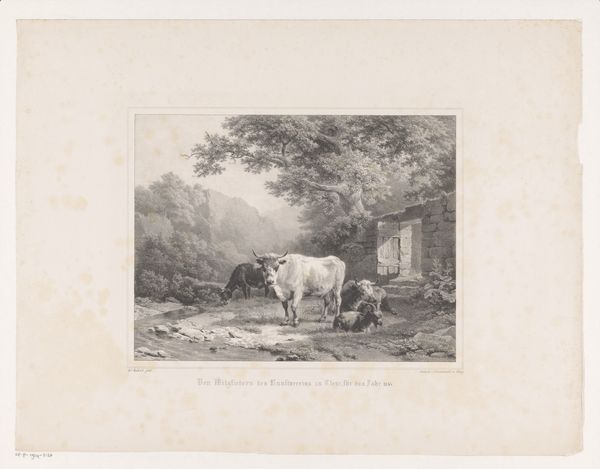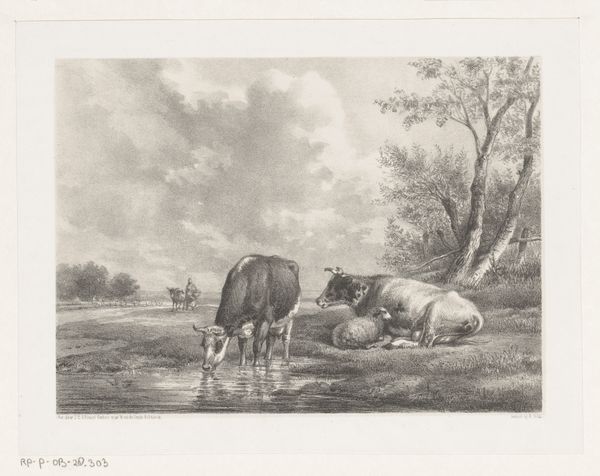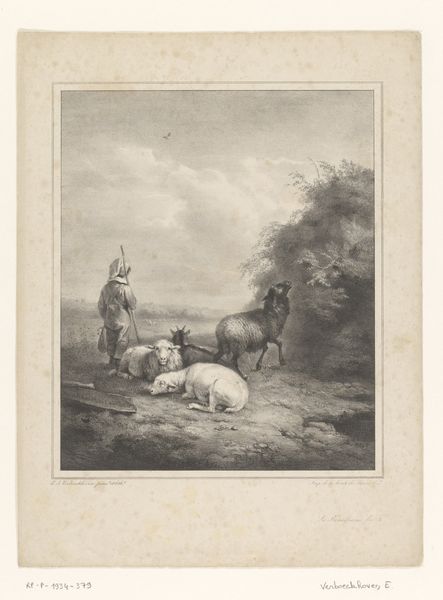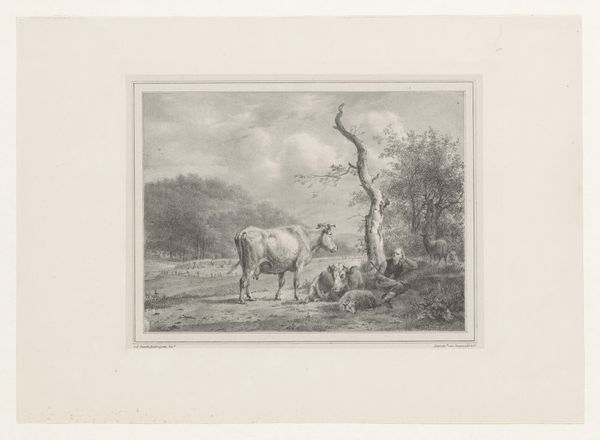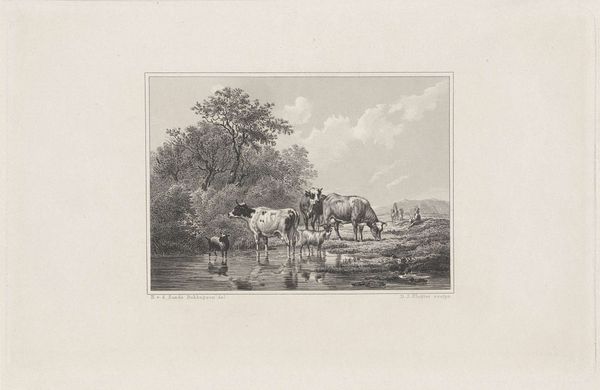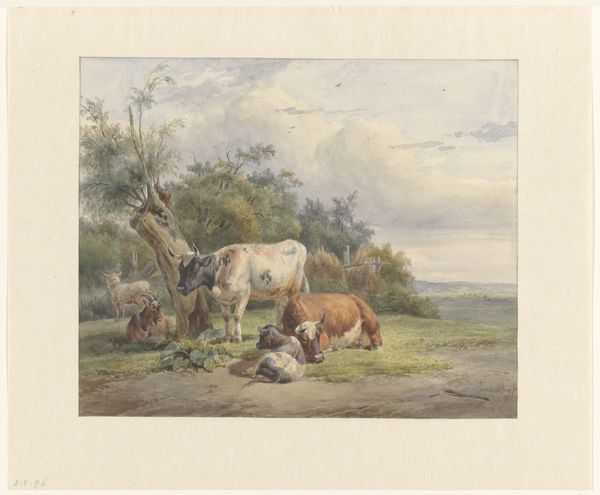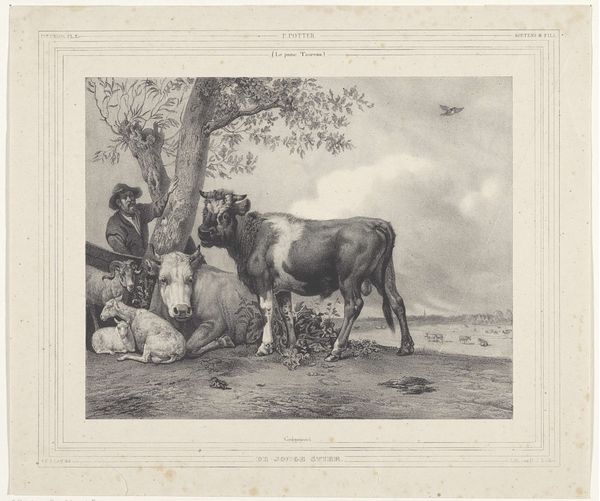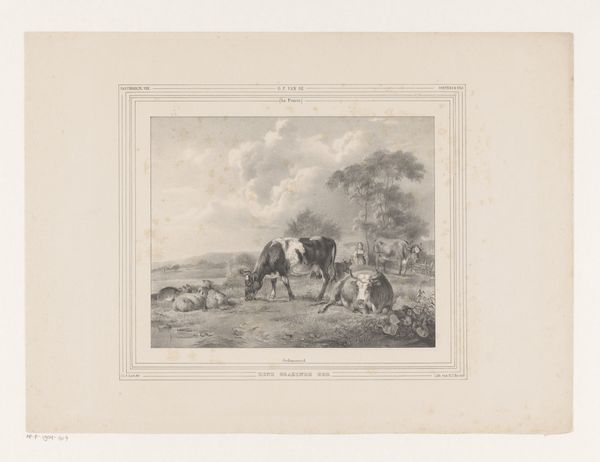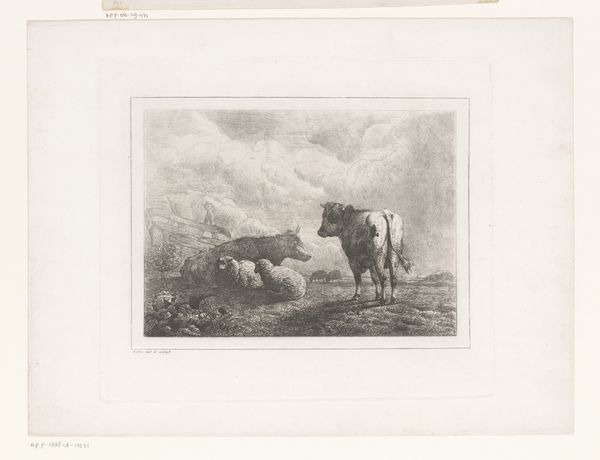
plein-air, watercolor
#
plein-air
#
landscape
#
watercolor
#
romanticism
#
watercolour illustration
#
genre-painting
#
green and neutral
#
botanical art
#
watercolor
Dimensions: height 464 mm, width 475 mm
Copyright: Rijks Museum: Open Domain
Editor: This is "Figuren met vee rustend in een landschap," or "Figures with cattle resting in a landscape," dating from sometime between 1826 and 1873. It’s a watercolor. It evokes a feeling of pastoral calm, almost like a memory. What do you see in this piece? Curator: Immediately, I see the weight of history, not just of art, but of how we’ve viewed nature. This Romantic landscape leans heavily on established visual codes: the sheltering tree as a symbol of protection, the cattle representing pastoral innocence. Notice the almost allegorical placement of figures and livestock: it is a harmonious and Edenic vision. Editor: Allegorical how? It just seems like a relaxing countryside scene. Curator: Look closer at the positioning. The tree dominates, its branches arching like a protective hand over the figures and animals seeking its shade. Think about the symbolism of shade itself – respite, contemplation. Are they escaping labor? Or is it a commentary on how man interacts with his environment, taking rest from nature’s abundance? Editor: So you're saying it might be more than just a pretty picture? Curator: Absolutely! Consider the broader cultural context: Industrialization was changing the landscape. Artists were increasingly looking back to simpler, perhaps idealized times. Each carefully rendered element—the distant hills, the drowsy animals, even the unassuming farmhouse— speaks volumes about humanity's evolving relationship with the natural world. And ask yourself, does that relationship still resonate today? Editor: That's fascinating. I hadn't considered the painting as a commentary on industrialization, more just pretty scenery. Curator: Indeed. It's through understanding visual symbols and cultural memory that these seemingly simple landscapes become much more layered, rich in meaning. Editor: I will definitely look at art differently now. It really makes you wonder what a contemporary painting like this might "say" about today.
Comments
No comments
Be the first to comment and join the conversation on the ultimate creative platform.
